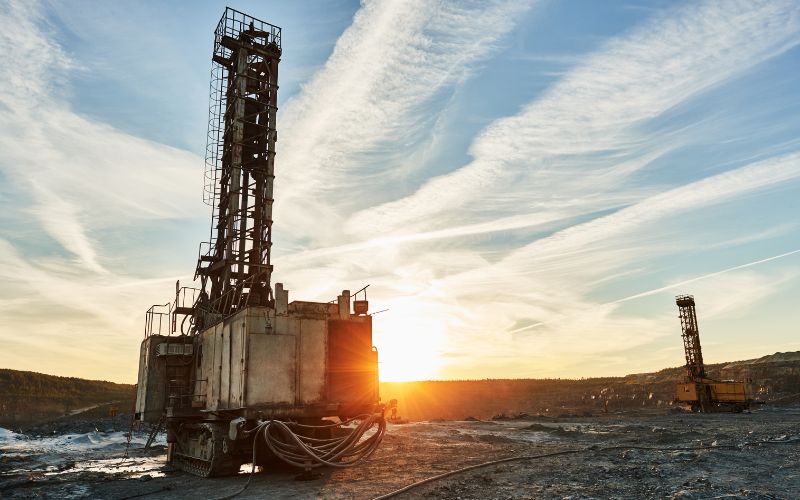
- Details
- By Kaili Berg
Navajo Nation is asking the White House to stop the transportation of uranium through its reservation, citing public health risks.
On April 29, Navajo Nation President Buu Nygren signed resolution CAP-23-24, urging President Joe Biden to halt uranium hauling activities on Navajo lands, particularly along State Route 89 and U.S. Highway 160.
Endorsed by the Navajo Nation Council, the resolution highlights the ongoing harm caused by past uranium mining and calls for executive action to protect the land, water, and public health.
This resolution follows President Nygren's and Speaker Crystalyne Curley's earlier request to President Biden on March 12, 2024, emphasizing the long-lasting damage caused by uranium mining during the Cold War, which continues to affect the environment and health of Navajo communities.
“Over the past few months, an issue of critical importance has arisen that threatens the health, wellbeing, and cultural integrity of our tribal communities: the transportation of uranium ore through Arizona,” Nygren stated in a letter addressed to President Biden.
In August of 2023, Nygren and Curley joined Biden as he established the Baaj Nwaavjo I’tah Kukveni Grand Canyon National Monument in Arizona. The exemption of the Pinyon Plain Mine from the monument's regulations raised concerns among tribal and environmental groups.
“Our support for the monument reaffirmed our stance against the transportation of uranium across Navajo lands, which not only endangers our communities but also contradicts our sovereign rights to enforce our laws and protect our territory,” Nygren wrote.
Energy Fuels, Inc., one of the U.S.’s top uranium producers, announced the production of the Pinyon Plain Mine near the Grand Canyon and Sacred Red Butte in December 2023. The company’s proposal to transport uranium ore from the Pinyon Plain Mine to the White Mesa Mill in Utah faces strong opposition
The proposal to transport uranium ore across Navajo Nation lands violates the Diné Natural Resources Protection Act of 2005, which prohibits uranium mining and processing on Navajo lands.
“The Diné Natural Resources Protection Act of 2005, was a powerful declaration by the Navajo Nation to prohibit uranium mining and processing on our lands,” Nygren said in a letter. “This law was our response to the catastrophic harm uranium mining has inflicted upon our people – a legacy of illness, contamination, and environmental degradation that we continue to confront.”
Despite past measures opposing transporting radioactive substances across Navajo Nation lands, the council lacks authority over state and federal rights-of-way.
“Alternative routes exist that can and should be used to avoid crossing Navajo lands. The use of these alternative paths would demonstrate respect for our sovereignty and a commitment to our collective health and safety,” Nygren wrote.
More Stories Like This
Michigan Tribes Tell Supreme Court: Don’t Bail Out EnbridgeAlaskans Raise More Than $1 Million For Communities Devastated by Typhoon Halong
A True American Tale: Indigenous Rights vs. Corporate Greed
In photos: Residents of Western Alaska Share Storm Damage of Ex-Typhoon Halong
Where the Buffalo Roam: Tribes Lead Bison Return for Food Sovereignty
Help us tell the stories that could save Native languages and food traditions
At a critical moment for Indian Country, Native News Online is embarking on our most ambitious reporting project yet: "Cultivating Culture," a three-year investigation into two forces shaping Native community survival—food sovereignty and language revitalization.
The devastating impact of COVID-19 accelerated the loss of Native elders and with them, irreplaceable cultural knowledge. Yet across tribal communities, innovative leaders are fighting back, reclaiming traditional food systems and breathing new life into Native languages. These aren't just cultural preservation efforts—they're powerful pathways to community health, healing, and resilience.
Our dedicated reporting team will spend three years documenting these stories through on-the-ground reporting in 18 tribal communities, producing over 200 in-depth stories, 18 podcast episodes, and multimedia content that amplifies Indigenous voices. We'll show policymakers, funders, and allies how cultural restoration directly impacts physical and mental wellness while celebrating successful models of sovereignty and self-determination.
This isn't corporate media parachuting into Indian Country for a quick story. This is sustained, relationship-based journalism by Native reporters who understand these communities. It's "Warrior Journalism"—fearless reporting that serves the 5.5 million readers who depend on us for news that mainstream media often ignores.
We need your help right now. While we've secured partial funding, we're still $450,000 short of our three-year budget. Our immediate goal is $25,000 this month to keep this critical work moving forward—funding reporter salaries, travel to remote communities, photography, and the deep reporting these stories deserve.
Every dollar directly supports Indigenous journalists telling Indigenous stories. Whether it's $5 or $50, your contribution ensures these vital narratives of resilience, innovation, and hope don't disappear into silence.
 The stakes couldn't be higher. Native languages are being lost at an alarming rate. Food insecurity plagues many tribal communities. But solutions are emerging, and these stories need to be told.
The stakes couldn't be higher. Native languages are being lost at an alarming rate. Food insecurity plagues many tribal communities. But solutions are emerging, and these stories need to be told.
Support independent Native journalism. Fund the stories that matter.
Levi Rickert (Potawatomi), Editor & Publisher

